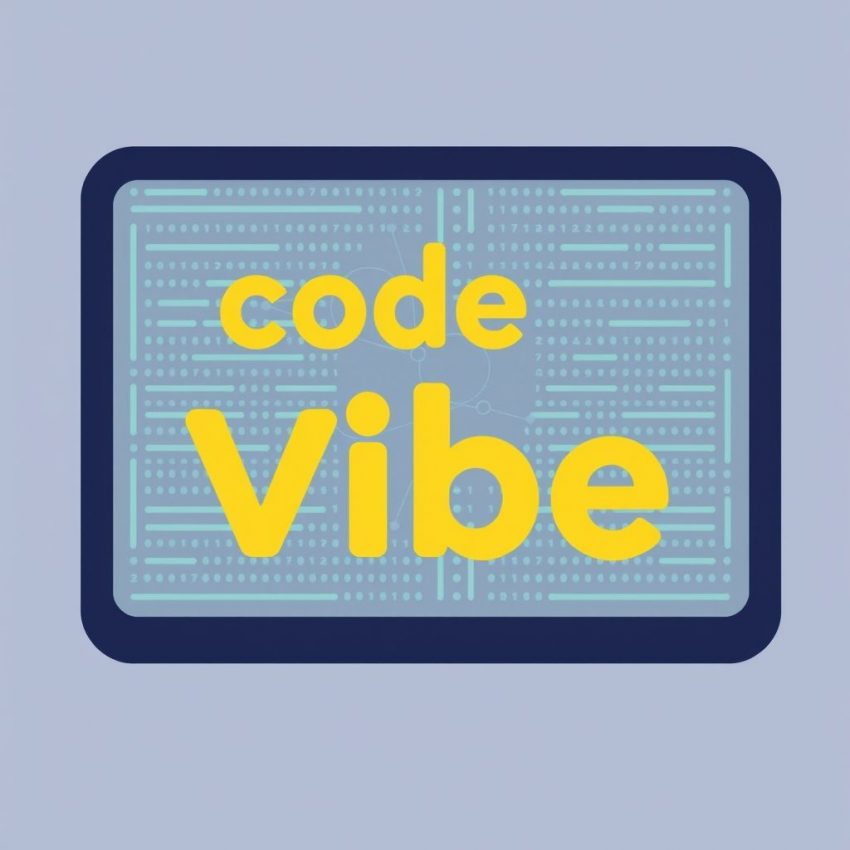Vibe Coding 101: Your Guide to AI-Powered Programming
The coding landscape is transforming, and at the heart of this revolution is AI. Forget tedious debugging and endless syntax searches; welcome to the era of vibe coding, where your intentions translate directly into functional code, powered by the magic of artificial intelligence. Intrigued? You should be. This post will break down what vibe coding is, its potential, and how you can start harnessing its power today.
What is Vibe Coding?
Vibe coding refers to a new paradigm in software development where developers express their coding intent in a more natural, high-level way, relying on AI to translate that intent into executable code. Think of it as communicating the "vibe" of what you want your code to do, and letting the AI handle the nitty-gritty details. This can take various forms, including:
- Natural language programming: Describe what you want your code to achieve in plain English (or any other natural language), and the AI generates the corresponding code. For example, instead of writing complex loops and conditional statements, you could simply write: "Find all users who signed up in the last month and send them a welcome email."
- Visual programming with AI assistance: Drag-and-drop interfaces combined with AI can suggest relevant code snippets, automate repetitive tasks, and even predict potential errors based on the visual flow of your program.
- AI-powered code completion and suggestion: Existing code editors are getting smarter, offering increasingly sophisticated auto-completion and suggestions based on your coding style and the context of your project. This is a foundational element of vibe coding, streamlining the traditional coding process.
The Potential of Vibe Coding:
The implications of this shift are profound:
- Increased productivity: Spend less time wrestling with syntax and more time focusing on the logic and functionality of your applications.
- Lowered barrier to entry: Coding becomes more accessible to individuals without extensive programming experience, empowering a new generation of creators.
- Faster prototyping and iteration: Quickly experiment with different ideas and iterate on designs without getting bogged down in implementation details.
- More robust and maintainable code: AI can help identify and fix bugs, optimize code performance, and ensure adherence to best practices.
Getting Started with Vibe Coding:
Ready to embrace the future of coding? Here's how to get started:
- Explore AI-powered coding tools: Several platforms and tools are emerging that incorporate elements of vibe coding. Research and experiment with options like GitHub Copilot, Tabnine, MutableAI, and others.
- Familiarize yourself with natural language processing concepts: Understanding how AI processes and interprets natural language will help you effectively communicate your coding intentions.
- Embrace the learning curve: Like any new technology, there will be a learning curve. Be patient, experiment, and don't be afraid to ask for help from the growing community of vibe coding enthusiasts.
The Future of Vibe Coding:
While still in its early stages, vibe coding has the potential to revolutionize the software development process. As AI models become more sophisticated and our understanding of human-computer interaction deepens, the possibilities are truly limitless. Imagine a future where anyone can bring their software visions to life, regardless of their technical background. That's the promise of vibe coding, and it's a future worth getting excited about.
So, are you ready to ditch the syntax struggles and embrace the vibe? The future of coding is here, and it's waiting for you.
Don’t miss out on this exclusive deal, specially curated for our readers! Unlocking the Future of Home Automation with Hubitat C8
This page includes affiliate links. If you make a qualifying purchase through these links, I may earn a commission at no extra cost to you. For more details, please refer to the disclaimer page. disclaimer page.

